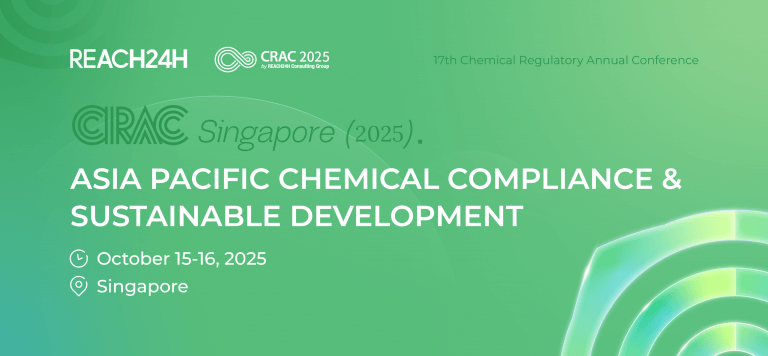Introduction
On August 1, 2025, the State Administration for Market Regulation officially approved and released the mandatory national standard “Requirements for the Restriction of Hazardous Substances in Electrical and Electronic Products” (GB 26572-2025), which will come into effect on August 1, 2027, fully replacing the previous recommended national standard GB/T 26572-2011. This marks a new phase in China's RoHS regulation under mandatory standards, signifying a major step forward in promoting green and sustainable development in the electrical and electronics industry.
What Is GB 26572-2025?
GB 26572-2025 is the first mandatory supporting national standard for the “Administrative Measures for the Restriction of Hazardous Substances in Electrical and Electronic Products”. Its technical content integrates and improves upon the original recommended standards, GB/T 26572-2011 (Requirements of Concentration Limits for Hazardous Substances in Electrical and Electronic Products) and SJ/T 11364-2014 (Marking Requirements for the Restriction of Hazardous Substances in Electrical and Electronic Products), aligning China's RoHS hazardous substance control requirements with those of the EU RoHS.
Key Update in the New Standard
The new GB 26572-2025 introduces several significant changes that will reshape compliance strategies for electrical and electronic products in China. These updates not only expand the scope of controlled hazardous substances but also refine product classification, testing methods, and conformity assessment requirements.
Expanded List of Hazardous Substances
The number of controlled hazardous substances has been increased from the original 6 (Lead, Mercury, Cadmium, Hexavalent chromium, Polybrominated biphenyls, and Polybrominated diphenyl ethers) to 10, with the addition of four phthalates (the specific substances and their limits are shown in the following table).
| No. | Name | Abbreviation | CAS No. | Limit/Mass Fraction |
| 7 | Dibutyl phthalate | DBP | 84-74-2 | ≤0.1% |
| 8 | Diisobutyl phthalate | DIBP | 84-69-5 | ≤0.1% |
| 9 | Butyl benzyl phthalate | BBP | 85-68-7 | ≤0.1% |
| 10 | Bis(2-ethylhexyl) phthalate | DEHP | 117-81-7 | ≤0.1% |
* Newly added hazardous substances and their limits
Product Classification Management
The standard introduces a classification system for electrical and electronic products, dividing them into Category I (products included in the compliance management catalog) and Category II (products not included in the compliance management catalog). Category I products must meet both limit and marking requirements, while Category II products are encouraged to comply with the limit requirements.
Unified Testing Methods and Judgment Rules
The GB/T 39560 series (i.e., IEC 62321 series) is designated as the unified testing method for hazardous substances.
The judgment rules for hexavalent chromium in metal plating have been adjusted.
Enhanced Marking and Conformity Assessment Requirements
Incorporating the marking requirements of SJ/T 11364-2014, digital marking forms such as QR codes and screen displays have been introduced to reduce the RoHS control costs for enterprises.
Higher requirements are set for technical documentation supporting hazardous substance content declarations, including the need for test reports to cover high-risk components, to improve the overall credibility of conformity assessment results.
Transition Period Arrangements
Products manufactured or imported before the standard's effective date (August 1, 2027) can continue to be sold and used. Starting from the 13th month after implementation, all manufactured or imported products must comply with the new standard.
Recommendations from REACH24H
The implementation of the new standard will have a profound impact on the electrical and electronics industry supply chain. REACH24H Consulting Group advises relevant enterprises to:
Conduct a Comprehensive Supply Chain Check
Immediately screen existing products and supply chains, with a focus on high-risk materials such as plastics, coatings, and adhesives for the newly added phthalates, ensuring all raw materials and components meet the new standard.
Practice Technical Upgrades
Proactively seek alternative materials and processes for the newly added phthalates, investing in R&D and product upgrades.
Prepare for Regulatory Requirements
Monitor updates to the Compliance Management Catalog and adjust product compliance strategies accordingly. Retain technical support documents (for at least three years after production ceases) for potential inspections.
Be Ready for Compliance
Allocate sufficient time before the official implementation on August 1, 2027, for product testing, label updates, and documentation preparation to ensure smooth market circulation in China.
The update and implementation of this standard represent not only regulatory requirements but also an inevitable trend toward green and high-quality development in the industry. Enterprises should respond actively by integrating hazardous substance control into full product lifecycle management to meet regulatory requirements and enhance market competitiveness.
If you have any questions in this regard, please feel free to contact us at customer@reach24h.com.





